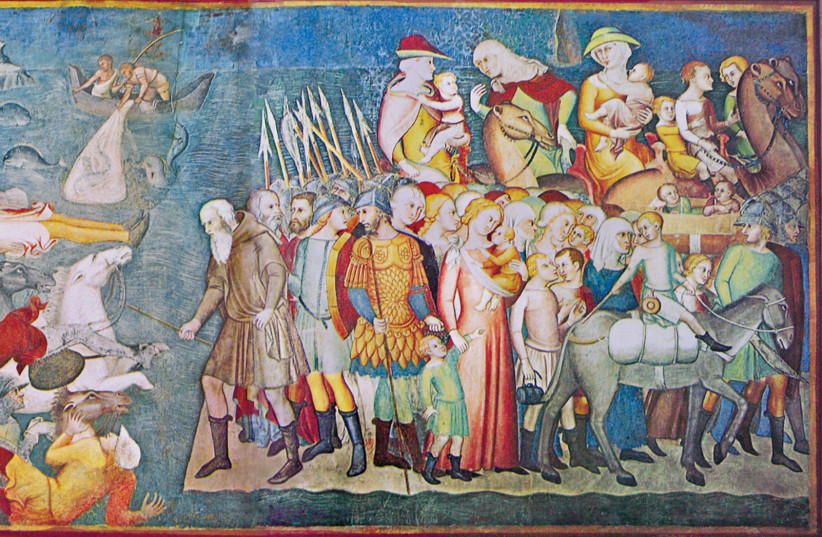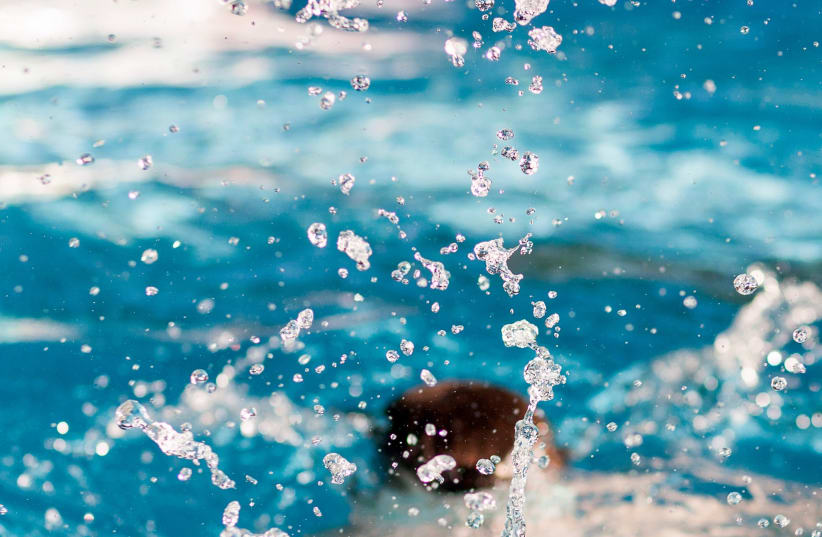“The paradox of courage is that a man must be a little careless of his life in order to keep it.” – Gilbert Keith Chesterton
Wolfgang Pauli once gave a talk on elementary particle physics at Columbia University. In the audience was one of the greatest physicists of the 20th century, Niels Bohr. After the lecture Pauli said to Bohr, “You probably think that these ideas are crazy.” “I do,” said Bohr. “Unfortunately, they are not crazy enough.”
The Midrash about Nachshon ben Aminadav is well known. Standing at the Reed Sea, pursued by Pharaoh and the Egyptian army, Nachshon ben Aminadav made his decision and jumped into the waters, nearly losing his life. Only at the very last second did God interfere and split the sea after which the Jews were able to enter the waters and were thus saved from Pharaoh’s assault. No other Jew, standing by, had the courage to take this unprecedented step. They waited until the waters were split before entering. Presumably, they thought that Nachshon was so terrified by the approaching Egyptian army that he chose to commit suicide rather than fall into the hands of Pharaoh and face cruel torture. Only afterward did they realize that it was he who showed great courage, saving all of them and that it was they who were the cowards.
Still, objectively, their decision made sense. Jumping into the sea would have ended in tragedy and nothing would have been accomplished. Better to wait and see what happens, they thought, and not take action that had nearly no chance of succeeding. But Nachshon won the day.
Looking at history, one needs to realize that the greatest accomplishments of mankind were achieved by the Nachshons of every generation. Those who were prepared to jump into the sea, taking huge risks, were responsible for magnificent scientific discoveries, space travel, grand business deals, daring political decisions and waging wars on evil. Very often, they were declared by others to be insane and irresponsible. People with courage and strong character are often looked at as strange.


No doubt, such bold and heroic actions often failed, bringing with them havoc and much pain, but without such attempts the world would not only stagnate, but in fact, disintegrate. There can be no future without hope and risk. Life is the art of drawing sufficient conclusions from insufficient premises. A reasonable probability is the only certainty we have. Aristotle maintained that probable impossibilities are to be preferred to improbable possibilities (Poetics). Surely risks must be calculated and carefully planned, but without an element of uncertainty nothing can be accomplished. There is no authentic life choice which is risk-free.
Nachshon’s deed, however, was not based on rampant imprudence. After the great miracles that took place, and God’s repeated statements that He would bring the Jews to Sinai and Israel, Nachshon felt that his decision to jump had a good chance of succeeding. Indeed, against everyone’s expectations, he was right. We can be sure that he had doubts about whether he would succeed, but he realized that this very uncertainty would impel him to greater strength. After all, the quest for certainty blocks the heroic and liberating deed. The reluctance to take risks has often killed opportunities to create a better world. By closing the door to all possible error, we shut out any possibility to discover the new and the better.
Judaism, throughout its long history, has always taken risks. In fact, it is built on the foundations of uncertainty: Abraham’s standing up to the injustices of his world and proclaiming ethical monotheism in defiance of the beliefs of his day; his unprecedented courage in challenging the Lord of the Universe concerning His treatment of the people in Sodom and Gomorrah, at the risk of incurring His wrath; Nachshon ben Aminadav’s heroic jump into the sea; Rabbi Yochanan ben Zakai’s daring demand of Vespasian to hand over the city of Yavne to the sages before he would surrender to the Roman empire; the Zionist movement in our own days – all of them took risks that could very well have led to failure while endangering themselves and others. Some, like Bar Kochba, did indeed suffer that fate; his courageous revolt against the Romans ended in total defeat.
Today, we no longer encounter religious leaders who act like Nachshon, prepared to jump into the sea, saving what needs to be saved and creating what needs to be created. Instead, we experience a constant desire to stay with the old and not rock the boat, to look over one’s shoulder fearing possible failure.
Judaism’s predicament is one of great urgency; it would be no exaggeration to speak of an emergency situation. Too many people marry out, are no longer connected with their Jewish souls, or lack any interest in developing a bond with Judaism. This is true not only for many communities in the US or Europe, but also in Israel. Merely a small percentage of Jews around the world are deeply connected with their Jewishness.
JUDAISM IS about new ideas. It is dependent on fresh concepts deeply rooted in its tradition. We must be aware that if we do not apply new remedies we should expect new evils, because time is the greatest innovator. Sticking to the old is contrary to nature and those who do so are buried long before they die. Too often, people object to novel ideas and try to kill them before these ideas have a chance to prove themselves and actually succeed.
After all, we must remember that new ideas are fragile. They can be easily destroyed by a sneer or a yawn, abolished by a frown. It is for this reason that we must nurture and protect them, carefully considering them, however outrageous they may seem. When ideas are born, they struggle and have to fight for their place in this world. They need to be cultivated until they flourish. If they are truly worthy, they will survive and become a great blessing. If not, they will disappear and die the death of the infirm.
It was the famous philosopher, Talmudist and halachic expert Rabbi Eliezer Berkovits (1908-1992) in his Hahalacha Kocha V’tafkidah (Not in Heaven, the Nature and Function of Halacha), inspired by the writings of Rabbi Shmuel Moshe Glassner (1877-1924), author of Dor Revi’i on Tractate Hullin, who argues that over the last two thousand years, Judaism and Halacha have become defensive. It had to deal with aggressive antisemitism and other major problems so as to make sure Jews would survive often under nearly impossible circumstances.
The sages were forced to take steps to build many high walls, which made the natural growth of Judaism nearly impossible. It had to hold back constantly from expending and as such to prove the enormous capacity of authentic Judaism and let it flow like it always did in its earlier days. Instead, it had to succumb to a waiting mode, in anticipation of redeeming itself. Rabbi Berkovits had the courage to suggest that with the establishment of the State of Israel, the rabbinical authorities could now liberate Judaism from its diaspora mentality and using genuine Jewish tradition to do so.
Rabbi Berkovits suggested new ways to deal with the many halachic problems the state of Israel was confronted with which required courage, creativity and independent thinking. However, with few exceptions, most rabbis were still too much rooted in Judaism as it was observed in exile and stayed behind. In earlier days, it was the famous Rabbi Avraham Yitzchak Kook (1865 -1935), Chief Rabbi Ben-Zion Uziel (1880-1953) and some others who were of similar opinions.
Rabbi Berkovits was the Nachshon ben Aminadav of our generation and jumped into the Reed Sea. Like Nachshon, he was badly criticized for his suggestions and ridiculed by some, but looking back at the situation of today’s Judaism, we can see that he was right and one day the religious establishment will greatly admire his courage and foresight. ■
The writer is the dean of the David Cardozo Academy in Jerusalem. He is the author of many books, including the bestseller Jewish Law as Rebellion. His thoughts are discussed on many media outlets and he is also an international lecturer. Find his weekly essays at www.cardozoacademy.org.
